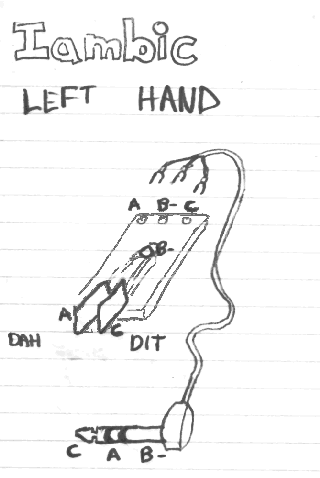Also known as Iambic Paddles, or Iambic Key.
An iambic keyer consists of two separately actuated switches. Iambic operation is useful for sending characters that have alternating patterns such as a period or the letter C.
Mode A and B
Mode A and B refer to the way that a Morse code keyer handles iambic (squeeze) keying so first, let’s define iambic keyer operation. An iambic keyer will send an alternating sequence of dits and dahs as long as both the dit and dah switches are depressed or squeezed.
The difference between mode A and B lies in what the keyer does when both paddles are released. The mode A keyer completes the element being sent when the paddles are released. The mode B keyer sends an additional element opposite to the one being sent when the paddles are released.
You can tell the basic difference between the modes with the letter C. In mode A you could squeeze both paddles (dah before dit) and you would let go of both after hearing the last dit. With mode B, you start the same BUT let go of both paddles after hearing the second
- dah*.
Slap Keying
Single lever keying is sometimes called slap keying since you can only depress either the dit (slap to the right) or dah (slap to the left). If you use a dual lever keyer such as an Iambic keyer only slapping to the left or right, then you are slap keying. This is fine, however, it does not utilize the "iambic" functionality of the key.
